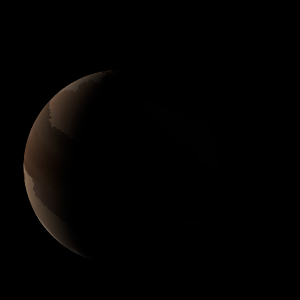|
|
Space Astro
|
Info for exoplanet "Wweng-m"
| Scientific (actual) data |
|---|
| Name | HD 36384 b |
| Planet status | Confirmed |
| Mass sini | 6.6 |
| Orbital period | 490 |
| Semi major axis | 1.3 |
| Orbit eccentricity | 0.2 |
| Discovered | 2023 |
| Updated | 2023-08-14 |
| Omega | 197.6 |
| Tperi | 2455980 |
| K | 156 |
| Publication | Published in a refereed paper |
| Detection type | Radial Velocity |
| Mass measurement type | Radial Velocity |
| Star name | HD 36384 |
| Right ascension | 84.93° |
| Declination | 75.04° |
| Mag v | 6.2 |
| Star distance | 196 |
| Star metallicity | -0.16 |
| Star mass | 1.14 |
| Star radius | 38.4 |
| Star sp type | M0III |
| Star age | 0.113 |
| Star temperature | 3940 |
| Wikipedia article | HD 36384 b |
Back
| |
| Fictional info (?) |
|---|
| Suggested name | Wweng-m |
| Planet type | Cold planet |
|
| Atmosphere | Carbon monoxide | 97% |
| Neon | 1.2% |
| Helium | 1.1% |
| Argon | 0.24% |
| Atmospheric pressure | 0.02 bar |
 |
| No known satellites |
| Google search for Wweng-m |
|
Website by Joachim Michaelis
|
|
|
|